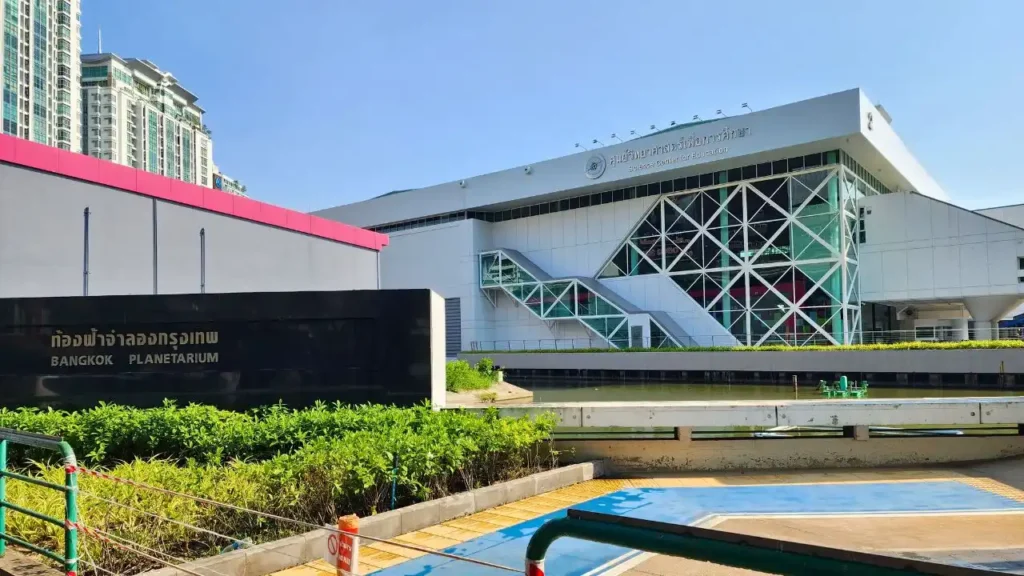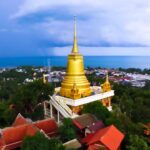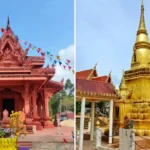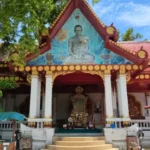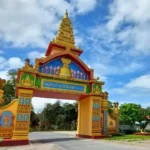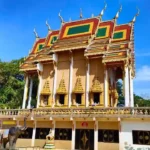Science Center for Education is also known as the Bangkok Planetarium. Located in 928, Sukhumvit Rd., Phrakhanong sub-district, Khlong Toei district, Bangkok, it was established in 1992. It was formed as a result of two major departments, Bangkok Planetarium and the Centre for Educational Museum. It is an epicentre for learning for Thai students and is often included in our Thailand Trip Packages. There are exhibitions about dinosaurs, marine life and the environment. There are six buildings in the Bangkok Planetarium.
- The first building: It is the Bangkok Planetarium, which provides information about astrology through the planetarium system.
- The second building: This is the Science and Technology Building, which shows the latest science developments. Moreover, it highlights advancements in various fields such as THEOS, Quickbird, Terra, and satellite technology.
- The third building: It is the Underwater World. Here, you can explore the life of marine resources under water.
- The fourth building: It is the Nature and Environment Building.
- The fifth and sixth buildings: These two buildings are about health science. In addition, you can learn how to exercise correctly and properly for better health.
Entry Fees and Opening Hours
The Science Center for Education in Bangkok is open from Tuesday to Sunday, between 9:00 AM and 4:00 PM. However, it remains closed on Mondays and public holidays.
Entry Fees:
- Science Exhibitions: Adults – 30 THB, Children – 20 THB
- Planetarium Shows: Adults – 30 THB, Children – 20 THB
There is a general entry fee of 30 Baht while for the star show there is an additional cost of 40 Baht.
Location and Directions
You can exit from the same entrance gate you entered from. The Science Center for Education is located at 928 Sukhumvit Road, Phra Khanong, Bangkok. Since it is located in the heart of the city, the museum can be reached via different routes like car, bus and train. Take the BTS Skytrain and get off at Ekkamai Station (Exit 2). From there, it’s just a 5-minute walk. The center is right next to the Eastern Bus Terminal and easy to find.
Museums nearby Science Center for Education
| Museum Name | Museum Name |
|---|---|
| Jim Thompson House Museum | National Museum Bangkok |
| Museum Siam | Museum of Contemporary Art (MOCA Bangkok) |
| Bangkokian Museum | Children’s Discovery Museum |
| The Erawan Museum | Royal Barges National Museum |
| Siriraj Medical Museum | Suan Pakkad Palace Museum |
| Congdon Anatomical Museum | Muse Shop by Museum Siam |
| The Wireless House One Bangkok | Royal Thai Air Force and National Aviation Museum |
Museum regulations
- Before entering the museum, show the ticket to the staff present at the entrance of the museum.
- Also, shoes must be removed before entering the museum.
- Pets are not allowed inside the museum.
- Moreover, food and beverages are not allowed inside the premises.
- All bags must be kept in the locker area.
- In addition, selfies, flash, and video recording are not allowed inside the museum.
- Smoking is strictly not allowed inside the museum.
- Lastly, you should dress modestly. Sleeveless shorts and shirts are usually prohibited. Women should make sure that their skirts extend below their knee.
Is Science Center for Education worth visiting? (Review)
Yes, it is worth visiting the Science Center for Education especially if you are a family with little children. As they will get to learn a lot about different subjects through the museum, the exhibits present in the museum provide a practical learning experience for young kids. Moreover, it arouses curiosity among the kids and creates engagement through the interactive exhibits. Apart from this, there is the planetarium show, which takes you through the different planets. As a result, it makes learning about astrology fun. Entry to the museum is also quite reasonable which makes Science Center for Education a must visit.
History of Science Center for Education
The Science Center for Education was established in 1992 with the motive to make science as a subject more enjoyable and fun for the young youth of Bangkok. Moreover, it was built under the supervision of the Ministry of Education and covers subjects and topics like space, geology, marine life, robotics, human biology, and technology. Today, it has become a popular tourist destination that is visited by families, school groups, and curious learners who want to explore science in a simple, fun, and memorable way.

